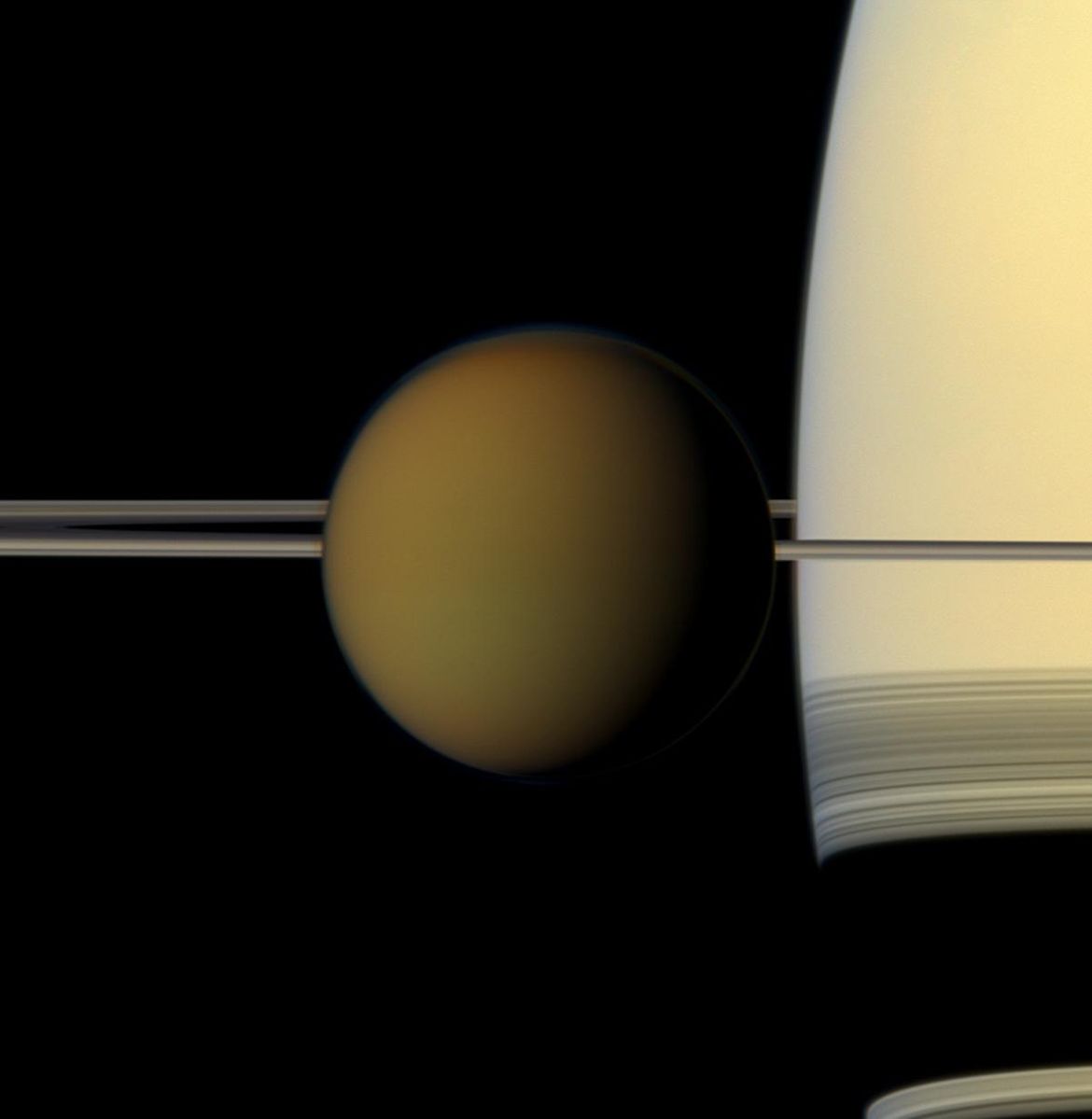BY
NASA’s Cassini probe crashed into the surface of the solar system’s second-largest planet, Saturn, in 2017, yet its incredible mission is still revealing new information.
Findings from Cassini’s data, published in the journal Nature Astronomy, revealed “that Titan rapidly migrates away from Saturn on a timescale of roughly 10 billion years, corresponding to a tidal quality factor of Saturn of Q ≃ 100, which is more than a hundred times smaller [faster] than most expectations.”
“This result brings an important new piece of the puzzle for the highly debated question of the age of the Saturn system and how its moons formed,” said Valery Lainey, the lead author of the team who analyzed the data, in a NASA press release.
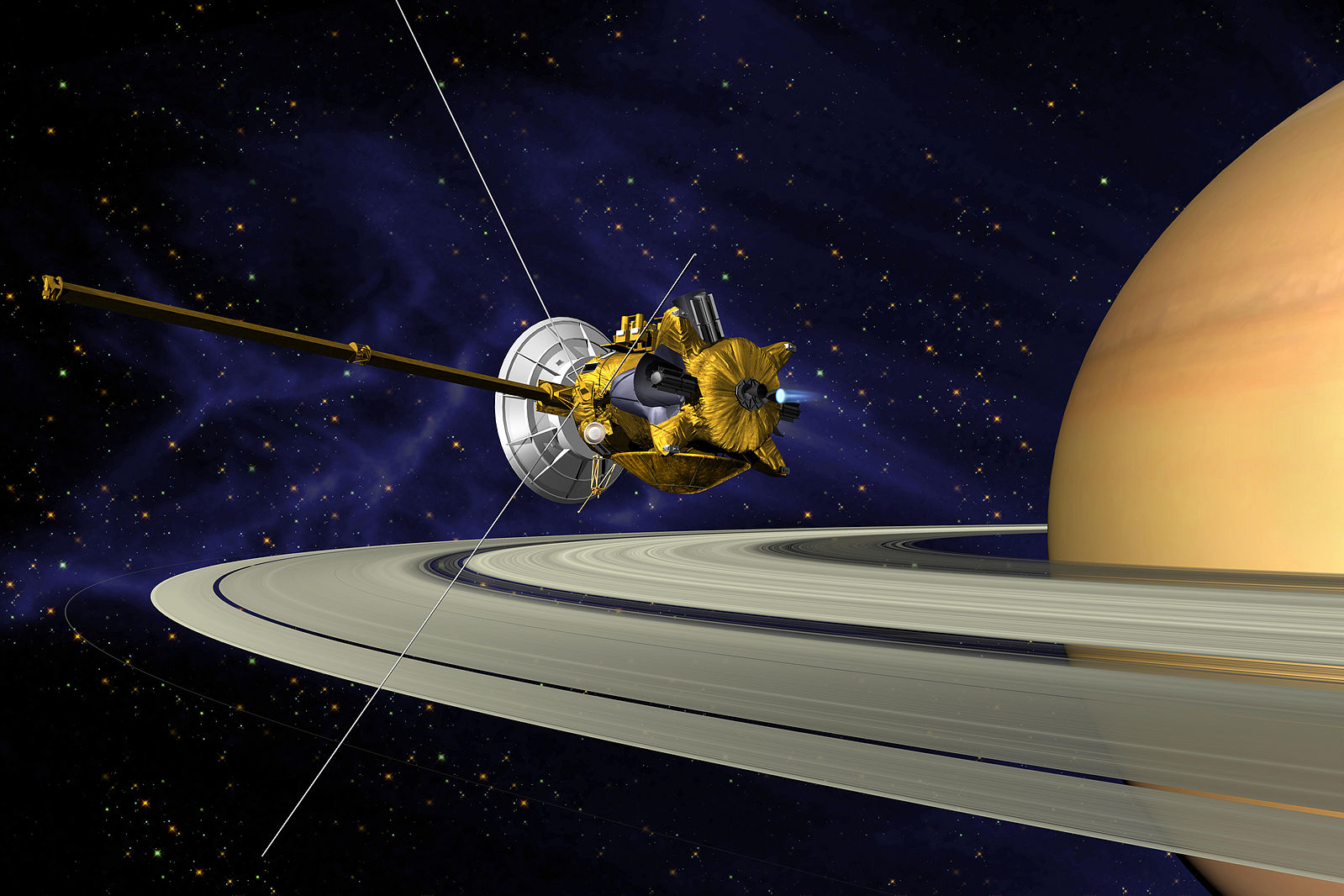
(NASA/JPL)
The study showed that the rates astronomers had been using to calculate Titan’s movement away from its planet were far lower than reality. Previously, scientists had used an estimated rate of drift based on the moon’s gradual escape from Earth, and applied all this to all lunar bodies in the solar system, regardless of size.
In fact, it appears that Titan started out very close to Saturn and moved away relatively quickly. One of the study’s authors, astrophysicist Jim Fuller, explained, “The new measurements imply that these kind of planet-moon interactions can be more prominent than prior expectations.”
Fuller added that the insights aren’t just relevant to Titan, but “they can apply to many systems, such as other planetary moon systems, exoplanets—those outside our solar system—and even binary star systems, where stars orbit each other.”
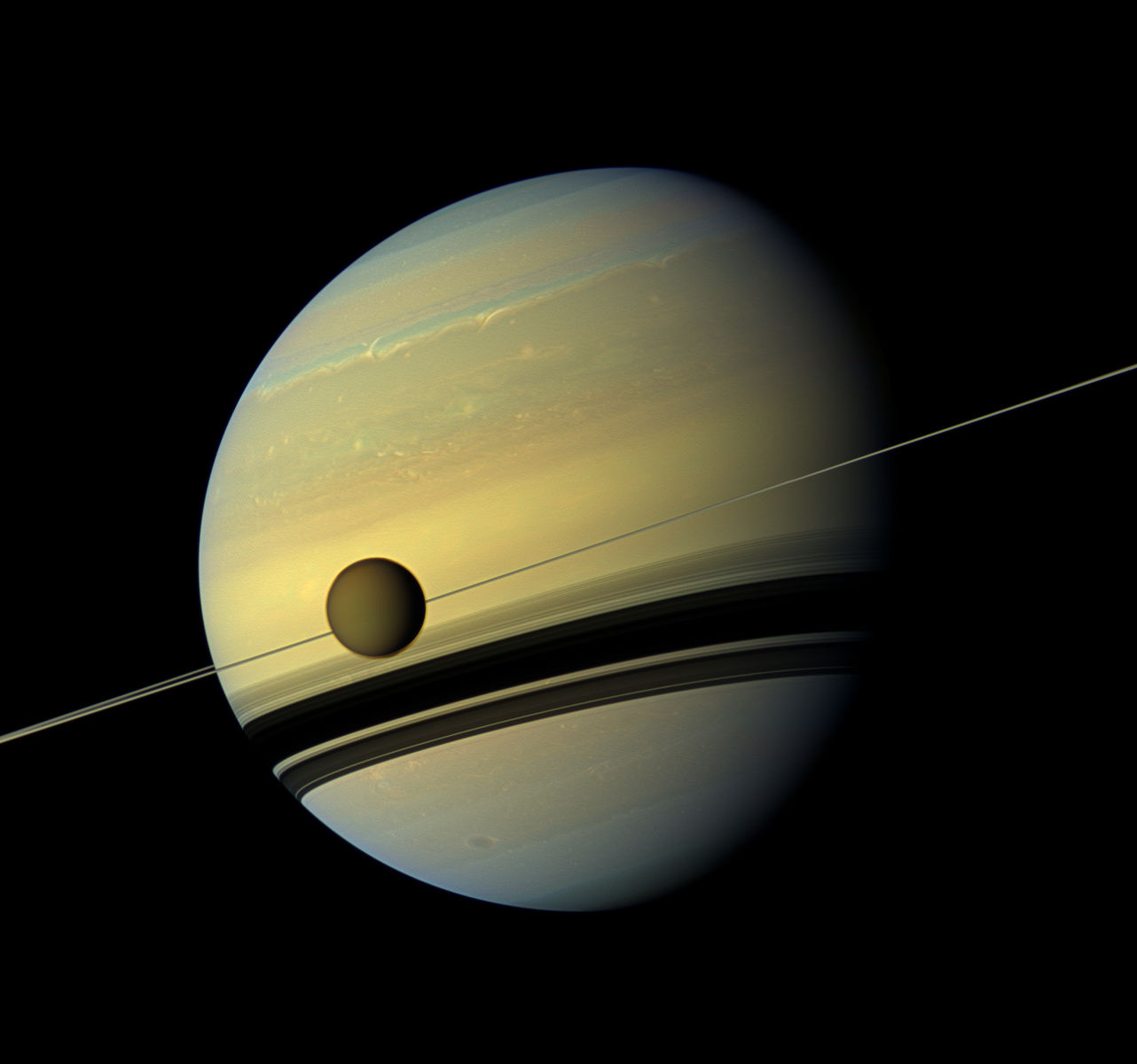
(NASA/JPL-Caltech/Space Science Institute)
The researchers were able to calculate Titan’s drift with incredible precision thanks to transmissions from Cassini verified by calculations from astronomical tables going back to the 1880s.
Firstly, as the article explained, “a coherent orbit of Titan was determined by reconstructing the trajectory of the Cassini spacecraft during 10 close encounters of the moon between February 2006 and August 2016.” Each time, they were able to chart the position of Cassini relative to both Saturn and Titan, providing information on the giant moon’s movements.
Secondly, they had nearly a century and a half of observations of Saturn and its moons to work with, including data processed with sophisticated computer software. The combination of these sources of information helped the astronomers determine Titan’s movement with unprecedented accuracy.
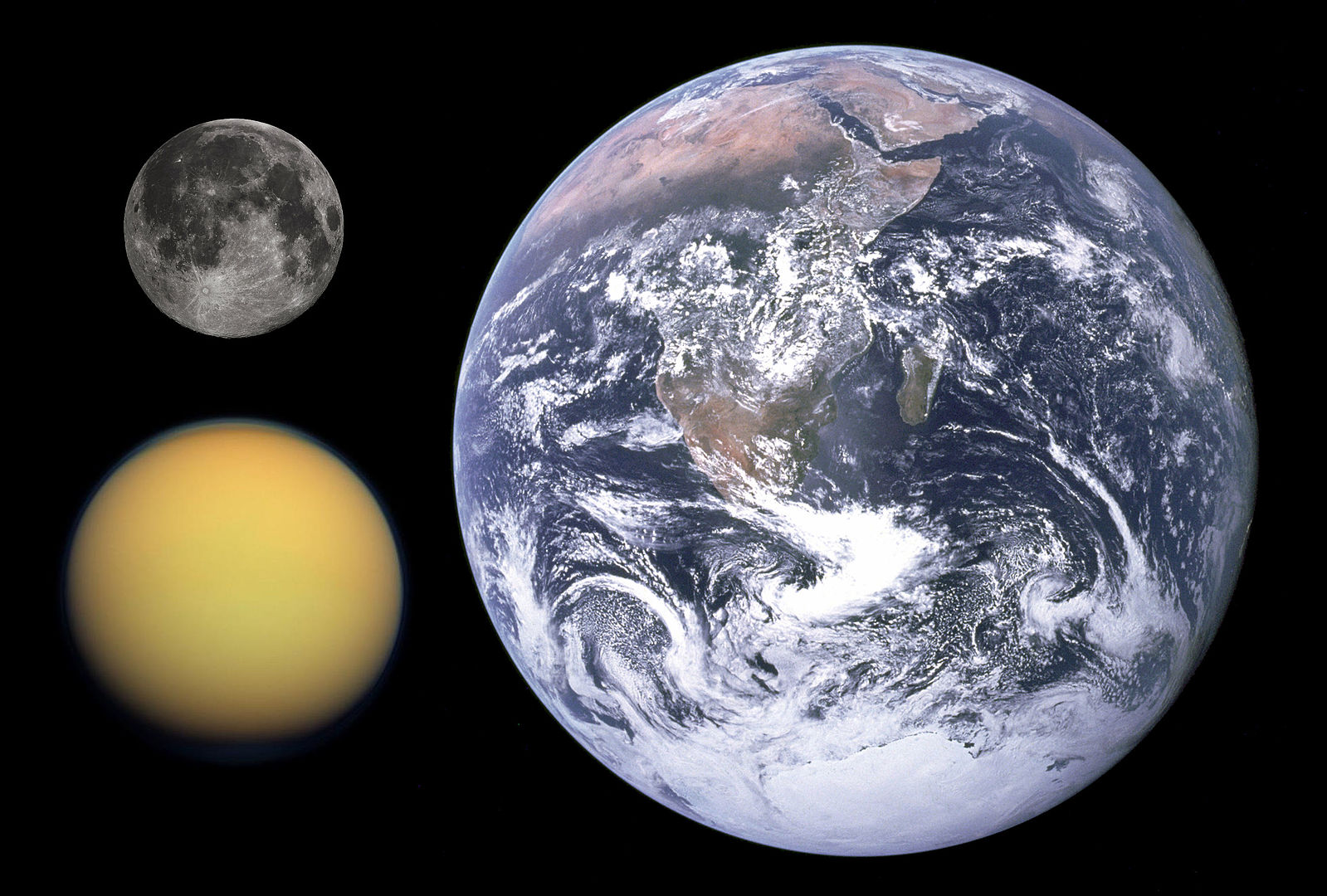
(NASA/JPL/Space Science Institute)
How exactly does a moon drift away from the planet that it orbits? “As a moon orbits, its gravity pulls on the planet, causing a temporary bulge in the planet as it passes,” according to NASA. “Over time, the energy created by the bulging and subsiding transfers from the planet to the moon, nudging it farther and farther out.”
When it comes to our own moon, the rate of drift is 3.8 centimeters (1.5 inches) per year, which means it won’t be leaving orbit anytime soon.
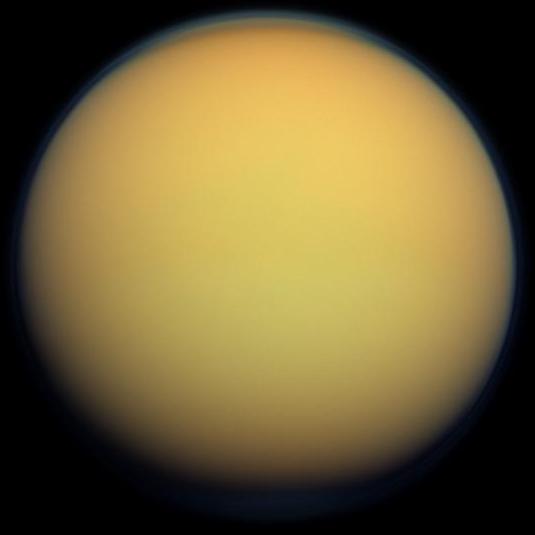
(NASA)
The mysteries of Titan haven’t been exhausted yet. This unique moon has a mostly nitrogen atmosphere but also contains oxygen, hydrogen, and carbon, the basic components for life. It also has a surface that scientists believe is covered by water, largely frozen due to the extremely cold temperatures that prevail there.
NASA’s Dragonfly probe will be launched in 2026, and it is designed to explore Titan’s atmosphere and land in a spot where the conditions for life might have once affected.
“We will have the opportunity to observe processes similar to what happened on early Earth when life formed and potentially conditions that could harbor life today,” explained Lori Glaze, NASA director of planetary science, according to CNN.
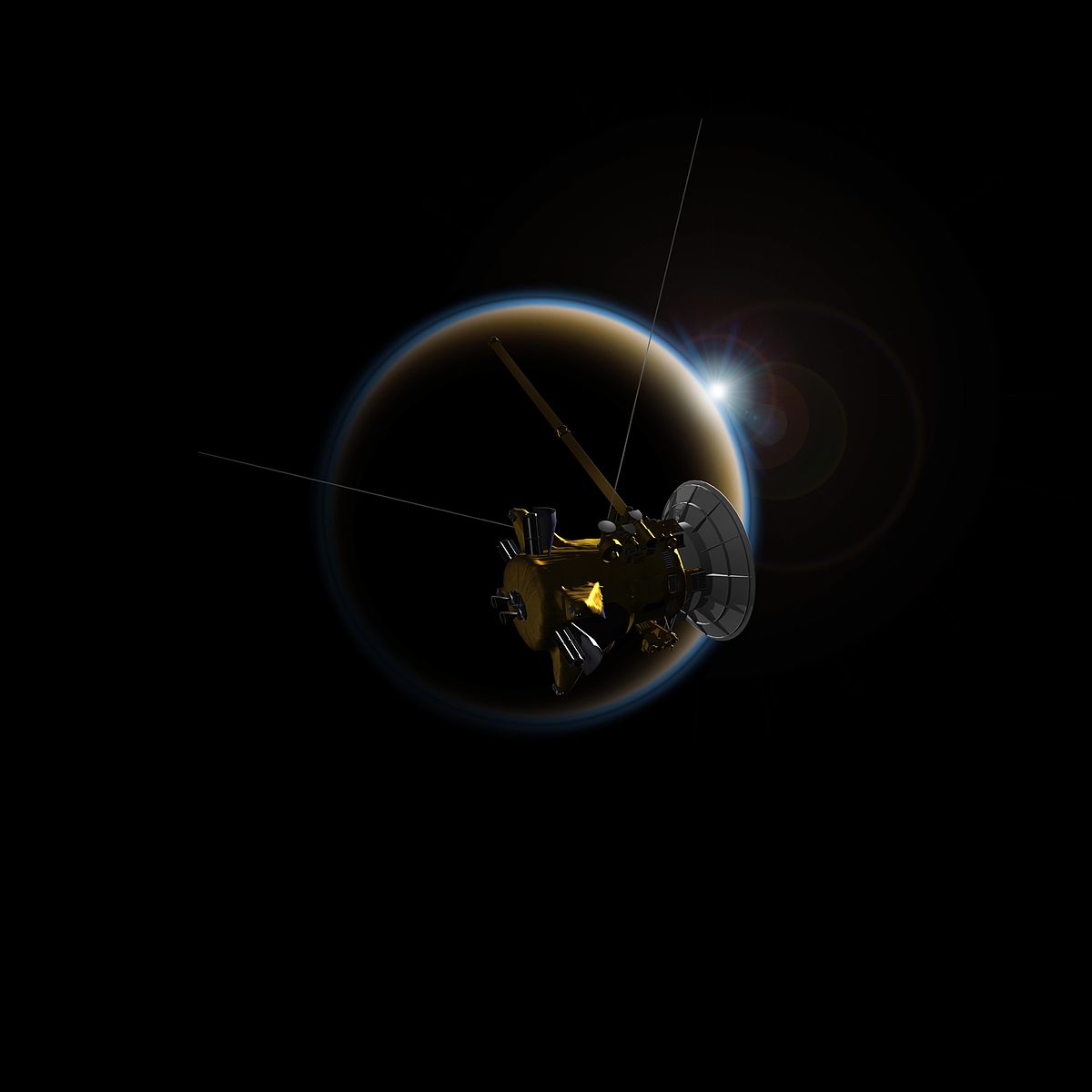
(NASA/JPL-Caltech/Space Science Institute)
Republished with Permission The Epoch Times SUBSCRIBE
Get Citizensjournal.us Headlines free SUBSCRIPTION. Keep us publishing – DONATE



